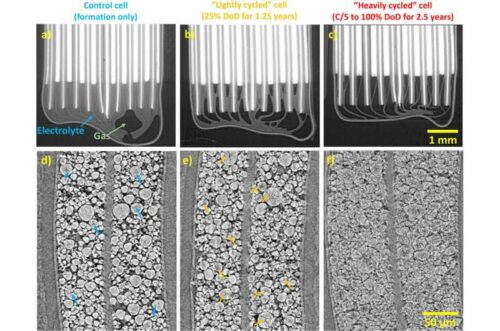A new battery lasts 20,000 cycles, resists wear, and could outlive cars. What does this mean for EVs and energy storage? Find out.

Researchers at Dalhousie University, using the Canadian Light Source (CLS) at the University of Saskatchewan, studied a new lithium-ion battery material called a single-crystal electrode. The single-crystal battery lasted over 20,000 cycles before reaching the 80% capacity threshold, equivalent to driving 8 million kilometres. In comparison, traditional lithium-ion batteries reached the same threshold after 2,400 cycles, demonstrating the significant potential of this technology.
When the researchers examined the single-crystal electrode battery, they found almost no signs of mechanical stress. Unlike regular batteries, where the electrodes are composed of tiny particles up to 50 times smaller than the width of a human hair, the single-crystal design appears to resist the damage typically caused by repeated charging and discharging.
Researchers have long understood that this new type of battery resists the micro-cracking that lithium-ion batteries are prone to. However, this is the first time a cell cycle has been studied for such an extended period. Using a synchrotron for this analysis allowed researchers to examine the battery at a microscopic level without disassembling it, preserving its valuable and extensive data accumulated over six years of cycling.
The findings suggest a significant milestone in battery technology, indicating that the battery may no longer be the limiting factor in an electric vehicle (EV). It could outlast other vehicle components, making EVs more durable and sustainable. Prolonging vehicle lifespan enhances their environmental benefits, as extended use further reduces their carbon footprint. Additionally, if battery packs can outlive the vehicle, they can be repurposed for large-scale energy storage, where high energy density—essential for EVs—is less critical.
These advanced batteries are already in commercial production, with adoption expected to grow rapidly in the coming years. Research like this highlights their reliability and provides valuable insights for companies planning to integrate and scale these technologies for long-term use.
Reference: Toby Bond et al, The Complex and Spatially Heterogeneous Nature of Degradation in Heavily Cycled Li-ion Cells, Journal of The Electrochemical Society (2024). DOI: 10.1149/1945-7111/ad88a8






